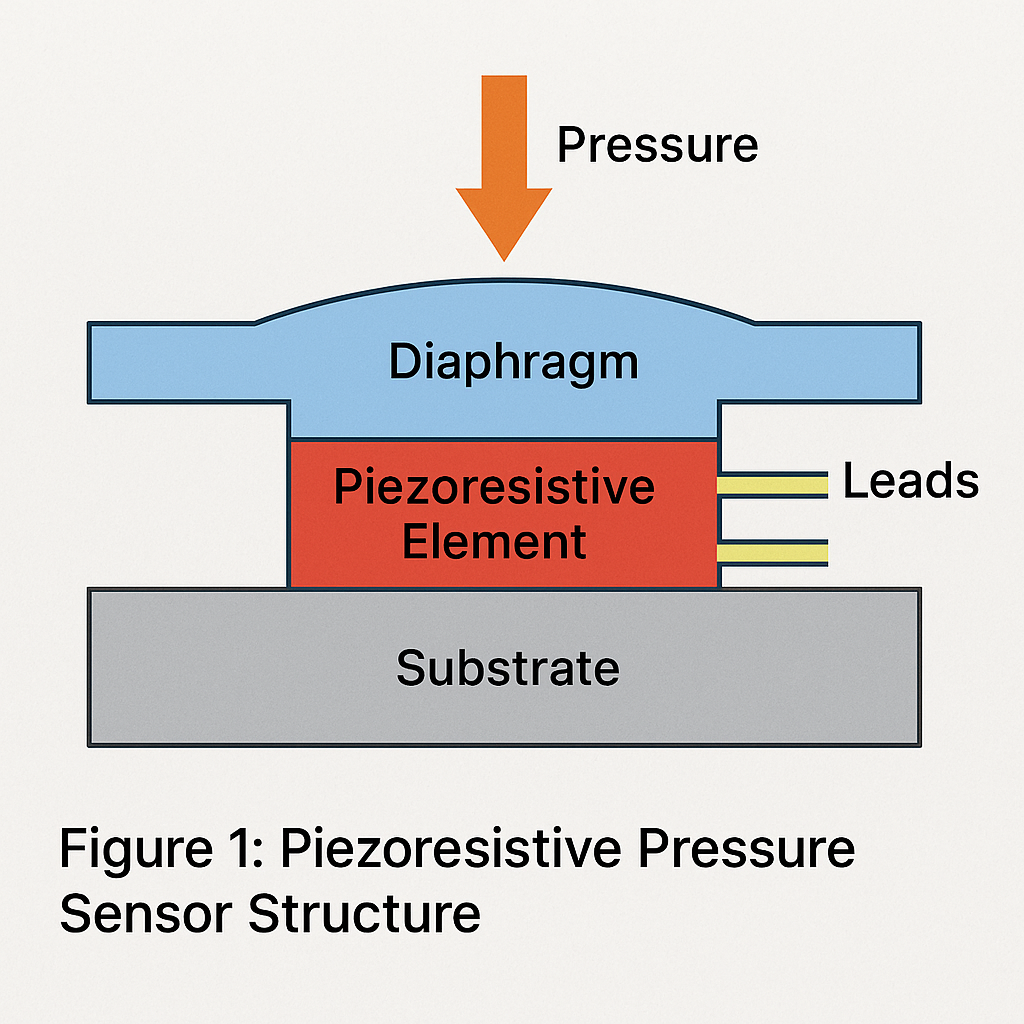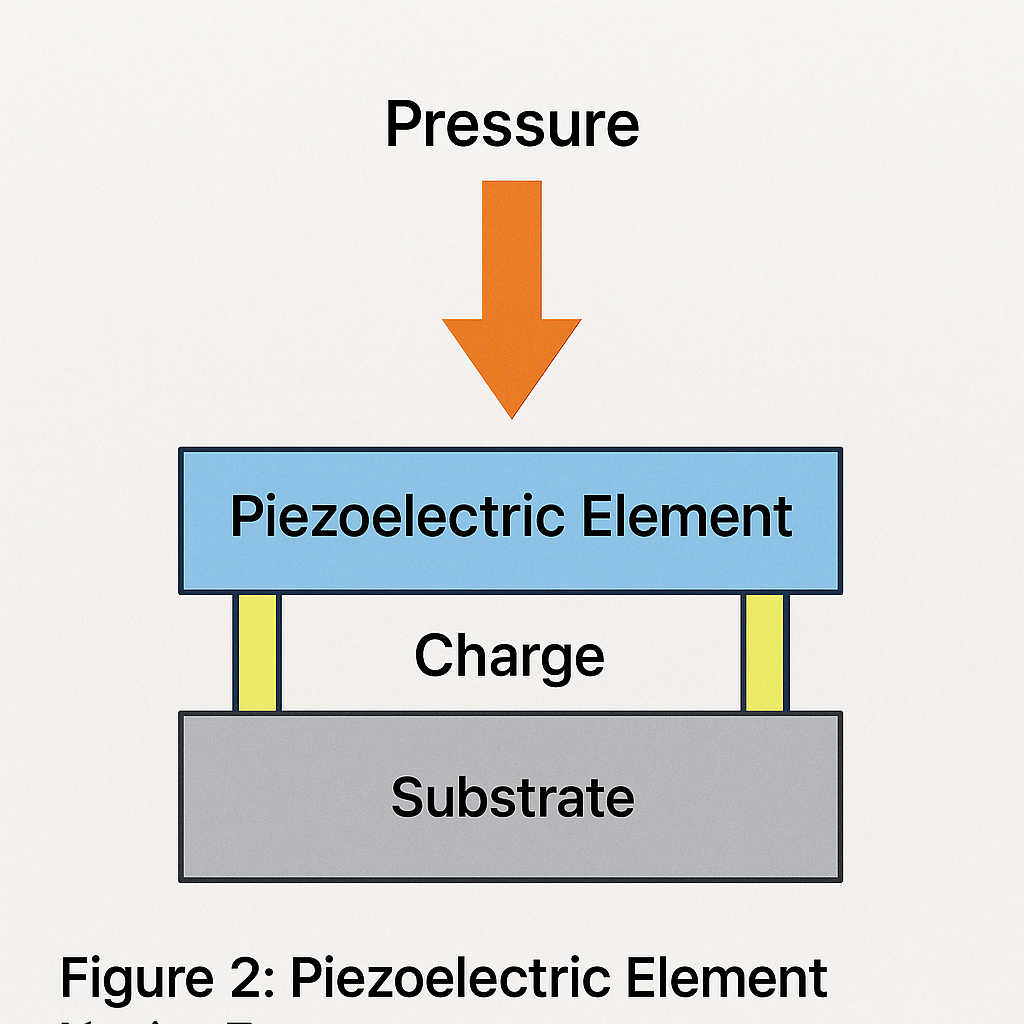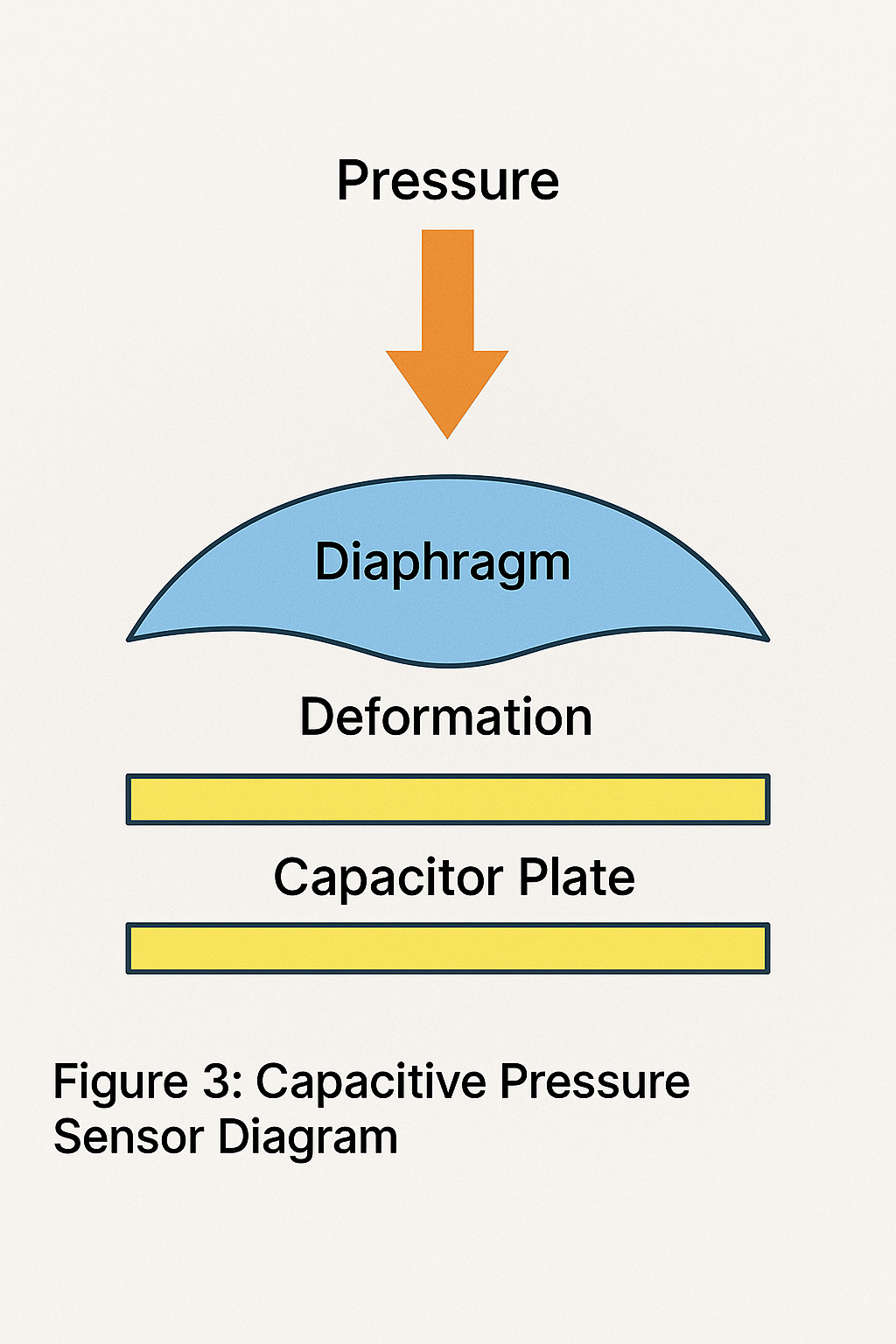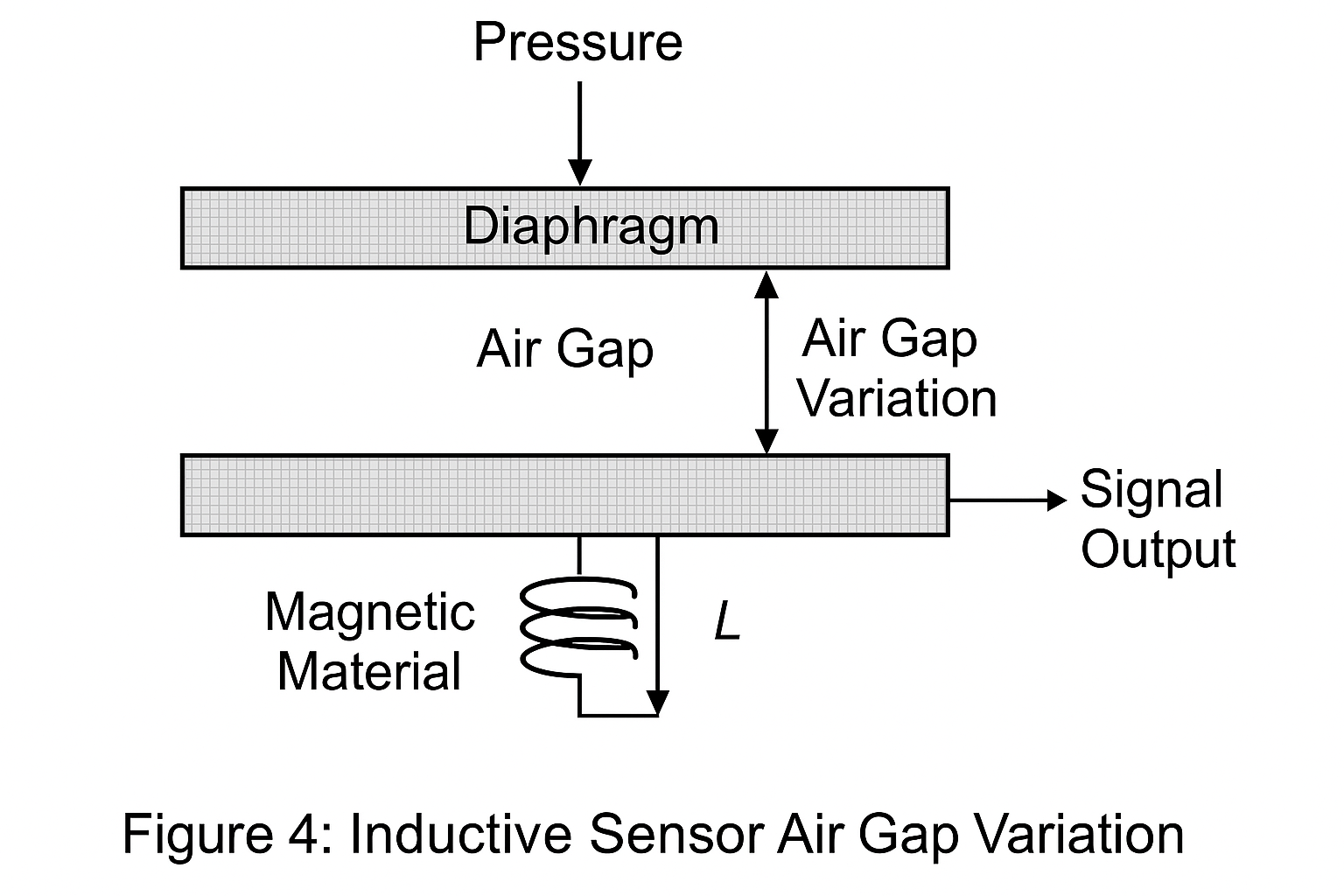Pressure sensors are among the most widely used devices in industrial applications. They are essential for automation and monitoring across industries such as hydropower, transportation, aerospace, military, petrochemicals, oil fields, power generation, and building automation. This article introduces the working principles of four common types of pressure sensors.
1. Piezoresistive Pressure Sensors
Working Principle: Piezoresistive pressure sensors use silicon wafers as elastic sensing elements. Through integrated circuit diffusion techniques, resistors are formed on the diaphragm to create a Wheatstone bridge. When external pressure is applied to the diaphragm, the resistance of the semiconductor changes due to the piezoresistive effect, causing an output voltage variation in the bridge. This voltage change is directly proportional to the applied pressure.
Advantages:
High sensitivity and accuracy
Compact structure
Wide measuring range
Applications:
Industrial process control
Medical devices
Hydraulic systems

2. Piezoelectric Pressure Sensors
Working Principle: These sensors rely on the piezoelectric effect, where certain materials generate an electric charge when mechanically stressed. The applied pressure causes deformation of the crystal or ceramic element, resulting in a voltage output that can be measured and correlated to the pressure.
Advantages:
High natural frequency
Excellent for dynamic pressure measurements
Good performance in harsh environments
Limitations:
Cannot measure static pressure
Requires complex signal conditioning
Applications:
Engine monitoring
Explosion detection
Vibration analysis

3. Capacitive Pressure Sensors
Working Principle: Capacitive pressure sensors use a flexible diaphragm as one plate of a capacitor. When pressure is applied, the diaphragm deforms, changing the distance between the plates and hence the capacitance. This change is converted into a corresponding voltage signal using electronic circuitry.
Types:
Single-capacitor sensors
Differential capacitive sensors
Advantages:
High sensitivity
Good linearity
Applications:
Low-pressure measurement
HVAC systems
Biomedical monitoring

4. Inductive Pressure Sensors
Working Principle: Inductive pressure sensors operate based on the change in inductance due to the movement of a magnetic core or diaphragm under pressure. The displacement changes the air gap in a magnetic circuit, affecting the coil’s inductance, which is then processed into an electrical signal.
Advantages:
High sensitivity
Wide measuring range
Limitations:
Not suitable for high-frequency dynamic environments
Applications:
Mechanical stress testing
Heavy-duty industrial systems

Summary Table: Sensor Type Comparison
| Sensor TypePrincipleKey AdvantagesMain Applications | |||
| Piezoresistive | Resistance change | Compact, accurate | Process control, hydraulics |
| Piezoelectric | Piezoelectric effect | Dynamic, rugged | Engines, explosions, vibrations |
| Capacitive | Capacitance variation | Sensitive, linear | Low-pressure, biomedical |
| Inductive | Inductance variation | Sensitive, wide range | Heavy-duty systems |
By understanding the working principles and application strengths of each type of pressure sensor, engineers and technicians can better select the optimal sensor type for specific process conditions and environmental requirements.
